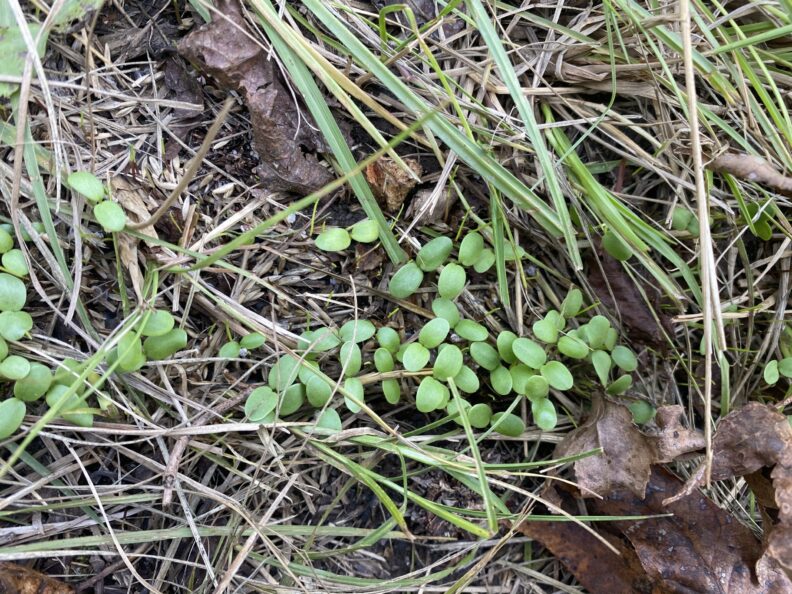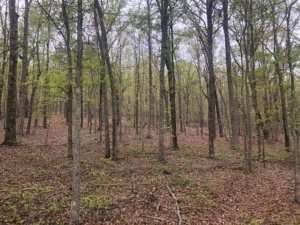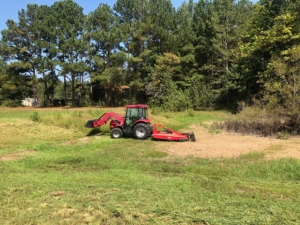The last blog post was all about the planing of the rye, clover and fescue seed at the farm. You do all that work, and you leave at the end of the week hoping and praying you did it right and that the seed you paid for and worked so hard to get in the ground actually does something.
You want to check it the next day but you know in your head that it won’t have pushed out of the soil that quickly so you wait some more.
And your conversations revolve around – Do you think it worked? Do you think it will come up? Do you think it will be green when we see it next?
AND THEN IT’S UP!
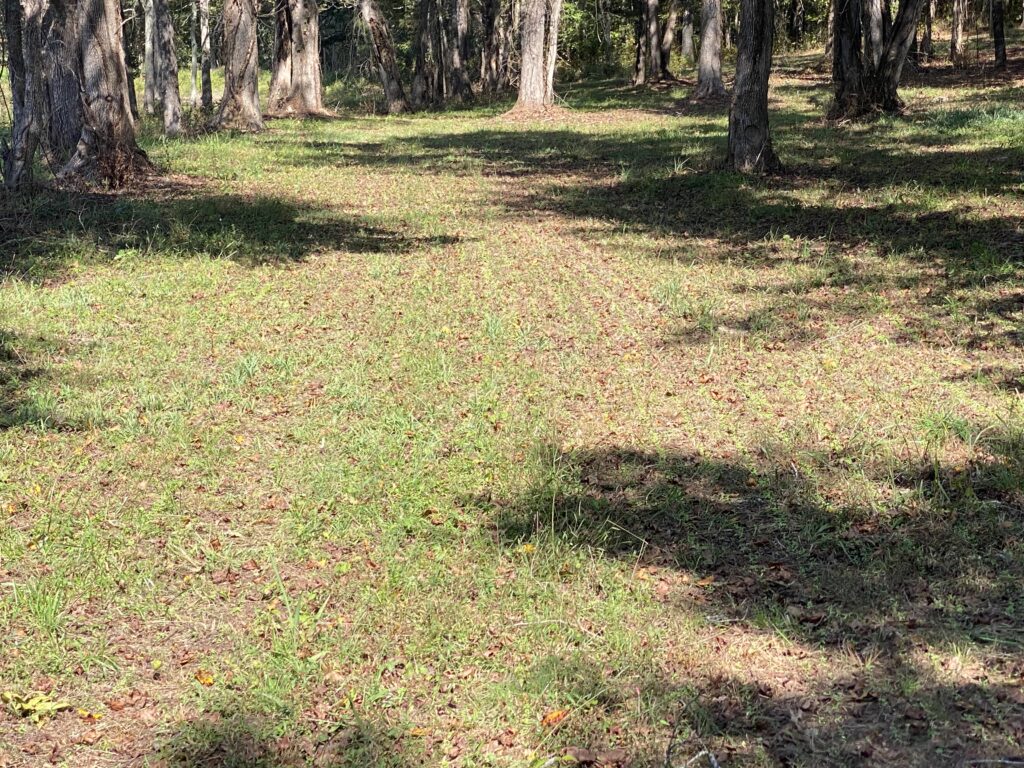
The no-till drill does a couple things when it’s used. It sets the density of your seed planting (how many per acre), makes a row, drops the seed, and covers it up.
The cool thing is when the seeds emerge you can see them in beautiful neat rows wherever you planted.
The hard thing is when you’re planting and there’s no way to see where you’ve been in the tractor because there’s already grass on the ground, sometimes you overseed and/or miss a spot. We’re learning.
Now we can see rows and rows of rye, clover and fescue popping up all over the farm.
On our very last pass, coming back from the upper pasture back to where we parked the tractor, and unhitched the no-till-drill, we left the seed in and it made what I refer to as the Yellow Brick Road (although it’s really just green seed).
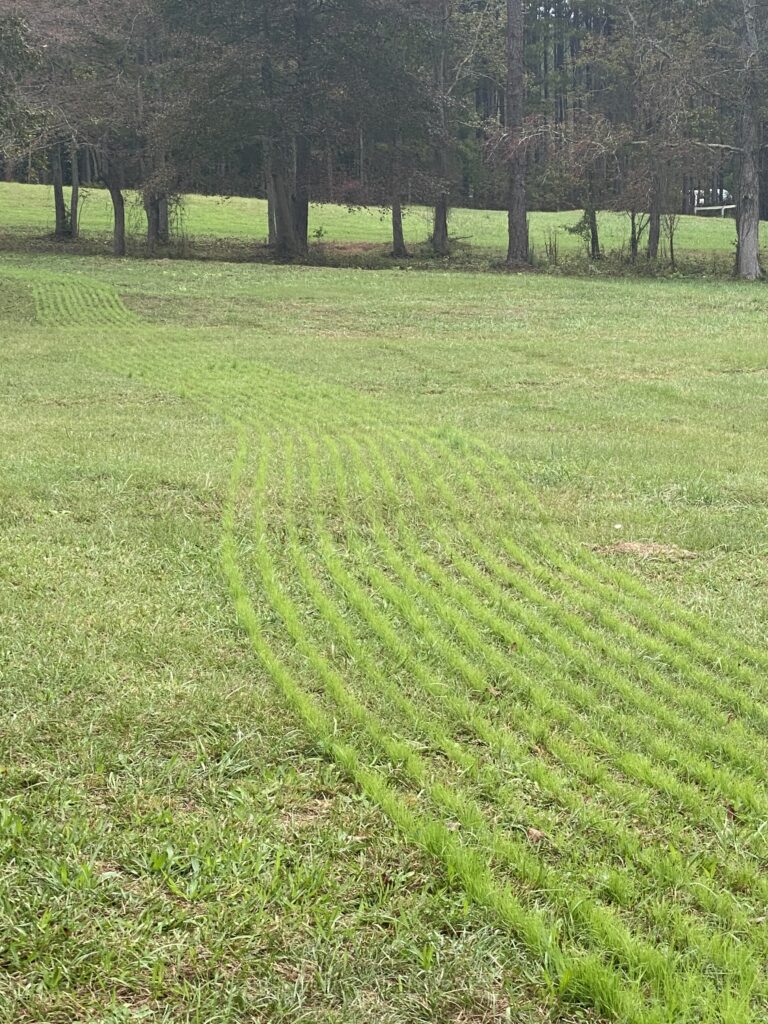
And now, about two weeks later, it’s lush and beautiful all over the farm.
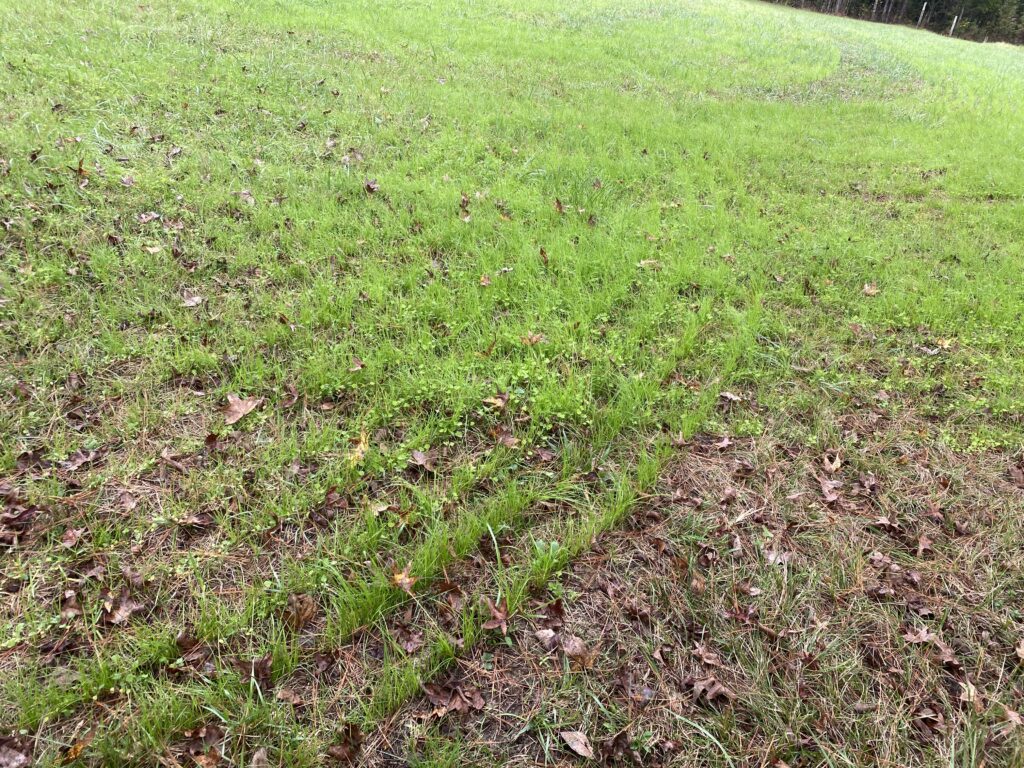
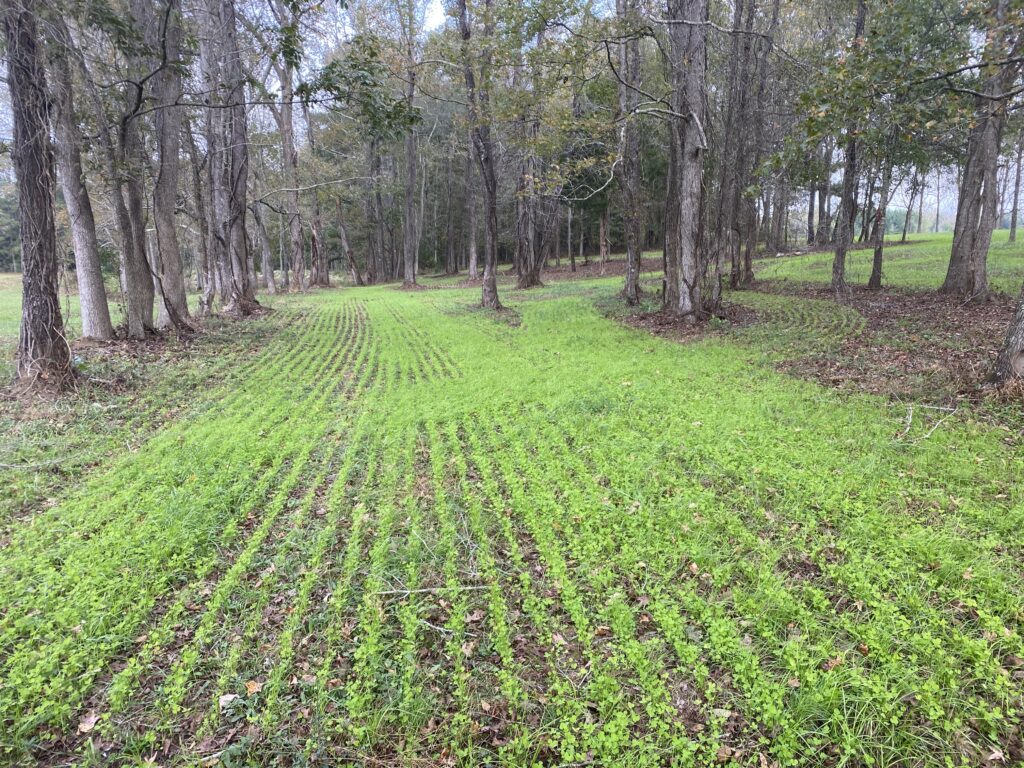
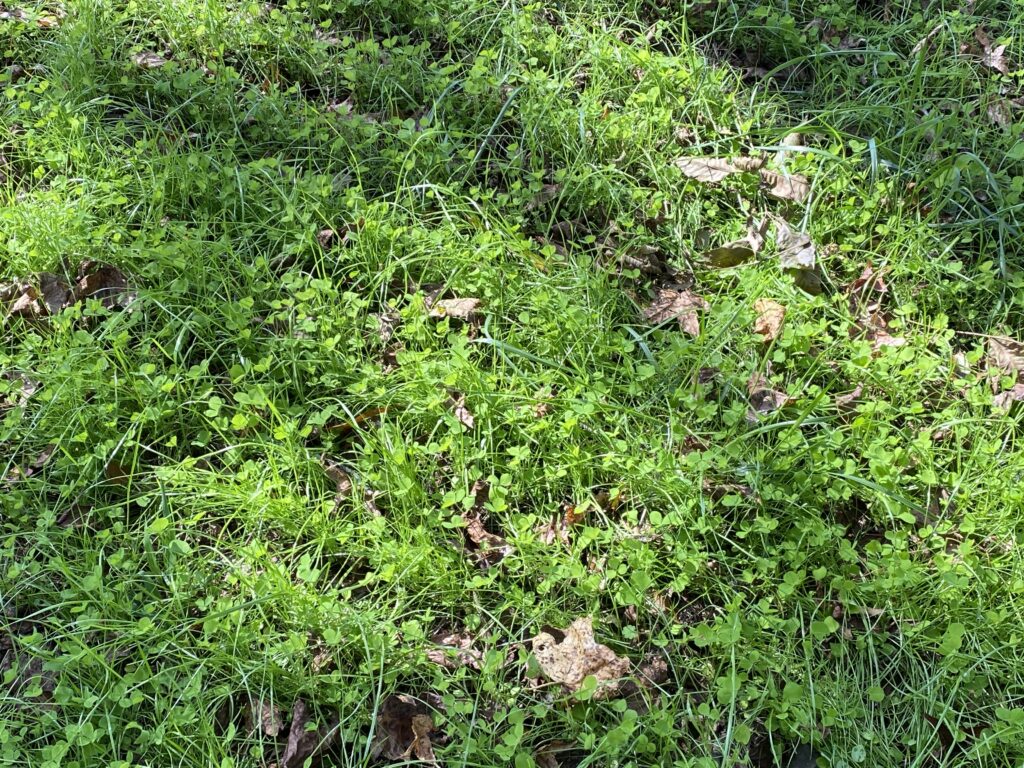
It is so satisfying to see the hard work we did that week come to fruition. The only hard part is we now don’t mow until spring, don’t really tractor, plow, anything until it’s time to pull under the clover.
So I’m spending the fall and winter plotting how much I will get to expand my bees with seven acres of crimson and red clover planted to make delicious clover honey.
